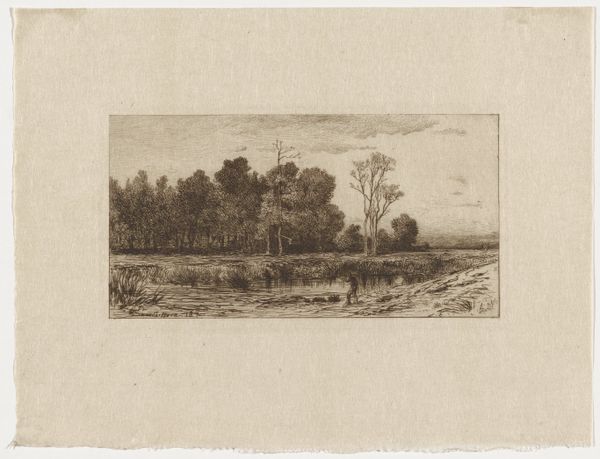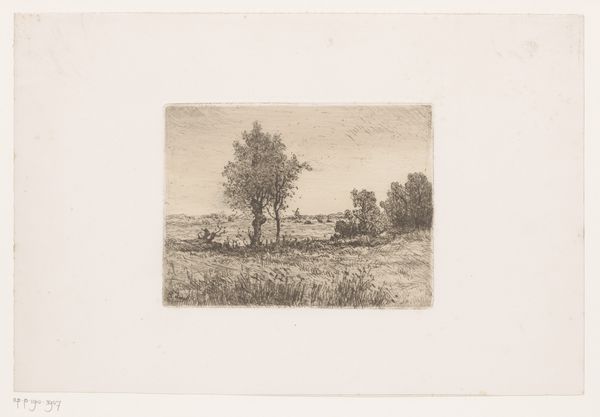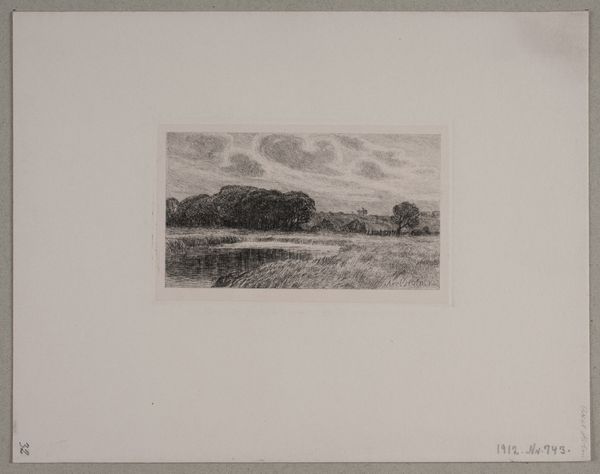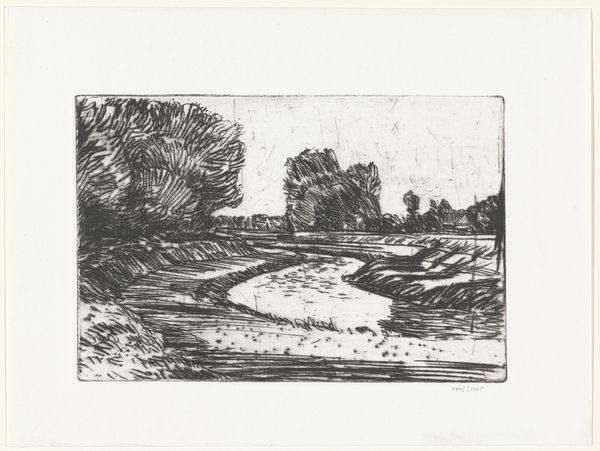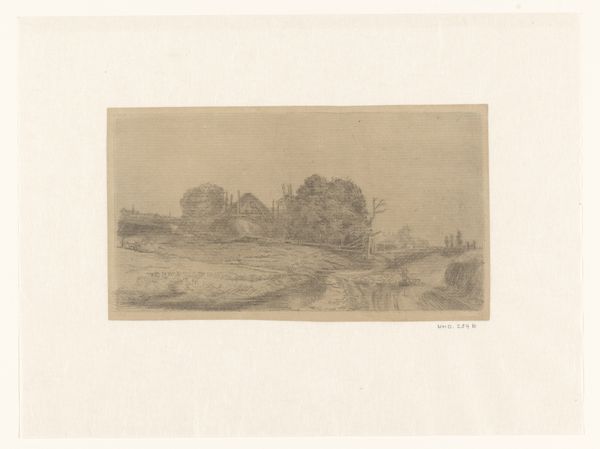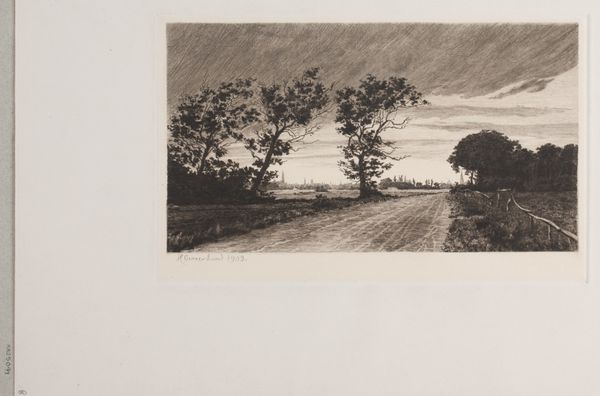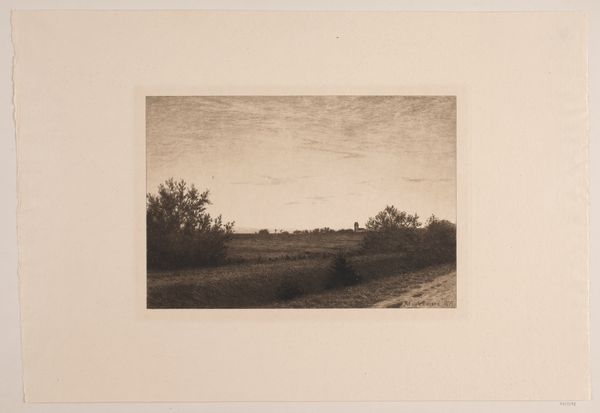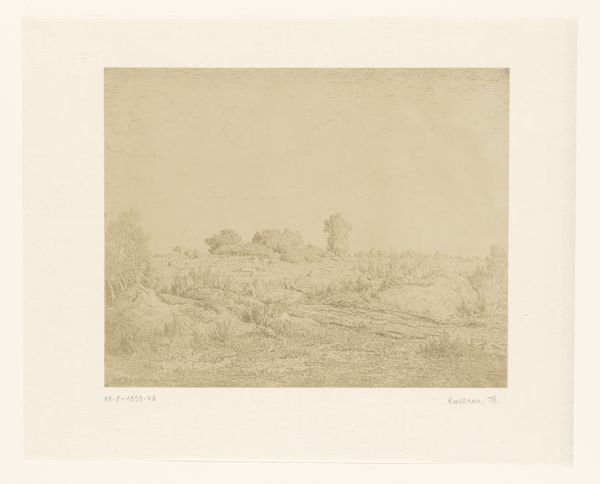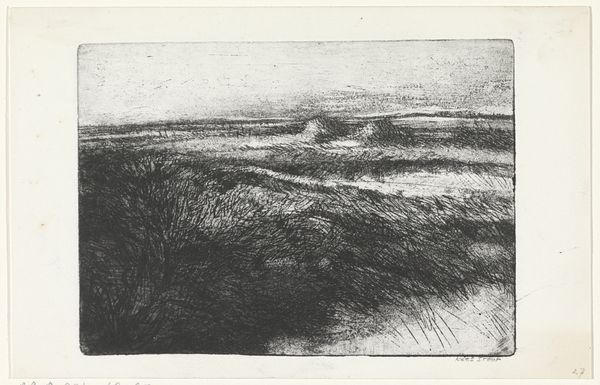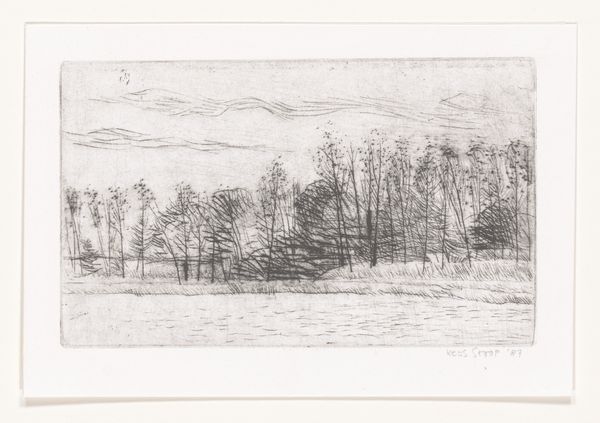
drawing, print, etching, paper
#
drawing
# print
#
etching
#
landscape
#
paper
#
monochrome
Dimensions: height 200 mm, width 247 mm, height 110 mm, width 134 mm
Copyright: Rijks Museum: Open Domain
Editor: So, here we have Kees Stoop's "Dennen op zandvlakte," a landscape etching made sometime between 1944 and 1990. It's so... textured, almost gritty, even though it's monochrome. The stark contrast makes it seem bleak, but in a compelling way. What stands out to you in terms of form and structure? Curator: Note the geometric structuring, the relationship between tonal values of black, white, and grey. Notice how the composition's flatness enhances the textured foreground, and the way this texture, achieved through the etching process, complicates any reading of depth. Are the trees placed symmetrically or asymmetrically? Consider the function of this choice in the composition. Editor: They’re asymmetrical; one’s on the left, the other slightly off-center to the right, giving it an odd balance. It feels intentional, pushing your eye across the image. Curator: Precisely. How does this asymmetry contribute to the overall reading of the work, considering Stoop's engagement with abstraction? The tonal contrasts, especially in the rendering of the foliage, are crucial elements of its language, wouldn't you agree? Editor: Definitely. The way the trees are defined shapes amidst all the scratchy lines of the landscape... it’s not a photograph; it's a study in contrasts and textures. Curator: Indeed. By reducing the landscape to essential geometric components and textures, Stoop creates an image that explores fundamental tensions in representation, wouldn’t you agree? What do we, or do we not, see, considering the limitations of monochrome and the texture that interferes with the legibility of form? Editor: I guess I was so focused on the 'what' I overlooked how the 'how' – the etching, the monochrome – influences what’s communicated! Curator: Precisely. It is important to view works such as this with formalist principles in mind. The artist's message comes alive in that regard.
Comments
No comments
Be the first to comment and join the conversation on the ultimate creative platform.
